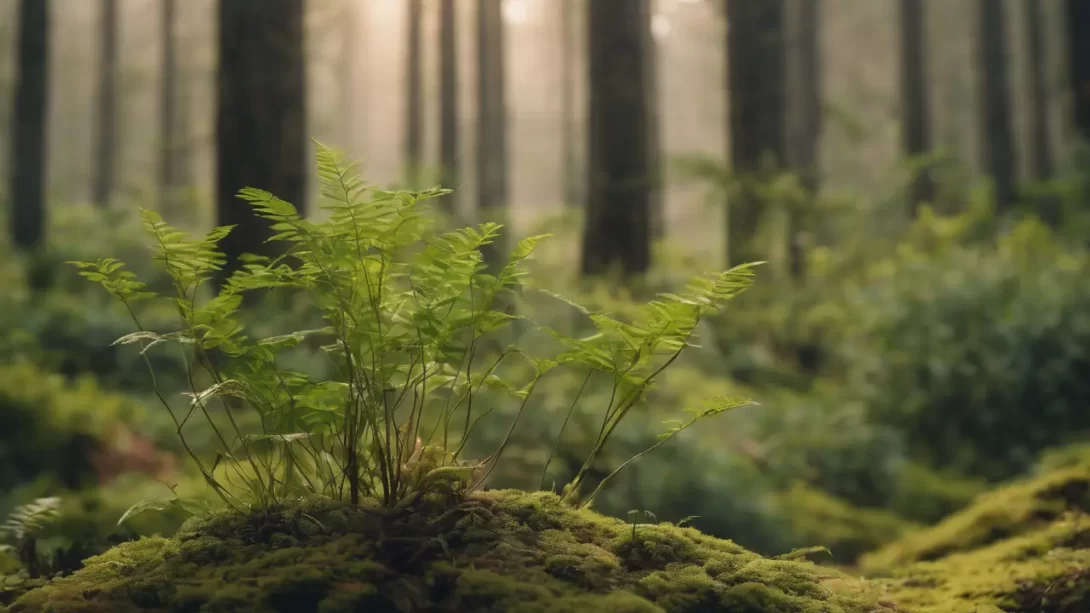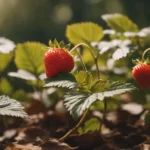Most plants are known for their ability to perform photosynthesis, a fundamental process that converts sunlight into energy. However, in the vast and diverse world of botany, there exists a unique subset of plants that do not rely on photosynthesis for their survival. These non-photosynthetic plants have adapted to obtain energy and nutrients in alternative ways, challenging our traditional understanding of plant life. This article explores the fascinating realm of these plants, shedding light on their distinct lifestyles and ecological roles.
Photosynthesis
Before delving into the world of non-photosynthetic plants, it’s crucial to understand photosynthesis. This process involves the conversion of light energy into chemical energy, which is then used to fuel the plant’s growth and development. Photosynthesis is not only vital for the plant itself but also for the environment, as it produces oxygen and removes carbon dioxide from the atmosphere. Typically, photosynthetic plants are characterized by green leaves, which contain the pigment chlorophyll, essential for capturing light energy. However, not all plants follow this conventional path.
Types of Non-Photosynthetic Plants
Non-photosynthetic plants can be broadly categorized into three groups: parasitic plants, mycoheterotrophic plants, and saprophytic plants. Each category represents a unique adaptation to living without photosynthesis. Parasitic plants, for instance, derive nutrients directly from other living plants. Mycoheterotrophic plants establish symbiotic relationships with fungi to obtain their nutrients. Lastly, saprophytic plants decompose and absorb nutrients from dead organic matter. These remarkable adaptations demonstrate the incredible diversity and resilience of plant life.
Parasitic Plants
Parasitic plants are a fascinating group that obtains nutrients and water from other living plants, often to the detriment of their hosts. These plants attach themselves to the host plant’s roots or stems using specialized structures called haustoria. Examples of parasitic plants include the well-known Mistletoe, which draws water and nutrients from tree branches, and Dodder, a vine-like plant that entwines and penetrates its host plants. Another intriguing example is the Broomrape family, which includes species entirely devoid of chlorophyll, relying completely on their host for survival. The study of these plants offers insight into the complex interactions between different species in nature.
Mycoheterotrophic Plants
Moving on to mycoheterotrophic plants, these are species that form a unique symbiotic relationship with fungi to meet their nutritional needs. Unlike parasitic plants that directly take from other plants, mycoheterotrophs rely on fungi that are often connected to photosynthetic plants through a network known as the mycorrhizal network. This fascinating relationship allows them to indirectly access nutrients from photosynthetic plants. Examples include the Ghost Orchid and Indian Pipe (also known as Corpse Plant), which lack chlorophyll and derive their nutrients entirely from their fungal partners. These plants are often found in dark, dense forest floors where sunlight is scarce, making photosynthesis impractical.
Saprophytic Plants
Saprophytic plants represent another intriguing group of non-photosynthetic plants. These plants feed on decaying organic matter, breaking it down to absorb the nutrients released during decomposition. This lifestyle allows them to thrive in environments where dead plant material is abundant, such as rich forest floors. One of the most well-known saprophytic plants is Monotropa uniflora, commonly known as the Ghost Plant or Indian Pipe, which is distinctively white due to the absence of chlorophyll. Some orchids also fall into this category, leading a dual life – starting as saprophytes and later forming symbiotic relationships with fungi.
Adaptations of Non-Photosynthetic Plants
The adaptations seen in non-photosynthetic plants are remarkable examples of evolutionary ingenuity. These plants have developed specialized structures and chemical processes to survive in their specific ecological niches. For example, parasitic plants have evolved haustoria to penetrate host plants, mycoheterotrophic plants have formed intricate associations with fungi, and saprophytic plants have developed efficient mechanisms to decompose and absorb nutrients from organic matter. These adaptations not only demonstrate the versatility of plant life but also their ability to exploit various ecological niches for survival.
Challenges and Conservation
Non-photosynthetic plants, while fascinating, face unique challenges in their natural habitats. Their specialized lifestyles make them particularly vulnerable to environmental changes, such as habitat destruction and climate change. For instance, the survival of mycoheterotrophic plants is closely tied to the health of their fungal partners and the photosynthetic plants connected to those fungi. Similarly, the decline in suitable decaying matter can adversely affect saprophytic plants. Conservation efforts are crucial to protect these unique species and maintain the balance of the ecosystems they inhabit. Preserving their natural habitats and understanding their ecological roles are key steps in ensuring their survival.
Ecological Roles of Non-Photosynthetic Plants
Despite not engaging in photosynthesis, non-photosynthetic plants play significant roles in their ecosystems. Parasitic plants can help control the population and growth of their host plants, thereby maintaining ecological balance. Mycoheterotrophic and saprophytic plants contribute to nutrient cycling in forest ecosystems, particularly in dense, shaded areas where decomposition is crucial. Understanding these roles is important in appreciating the full spectrum of plant life and its contributions to ecological diversity and health.
Conclusion
The world of non-photosynthetic plants is a testament to the adaptability and diversity of plant life. From parasitic to mycoheterotrophic and saprophytic species, these plants have evolved unique ways to survive without relying on photosynthesis. Their existence challenges our conventional understanding of plants and underscores the complexity of ecological relationships. As we continue to explore and understand these unique species, we gain a deeper appreciation for the intricate workings of nature and the importance of conserving diverse life forms. Non-photosynthetic plants, in all their peculiar glory, remind us of the endless variations and possibilities that nature has to offer.




